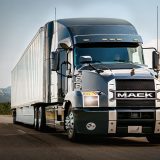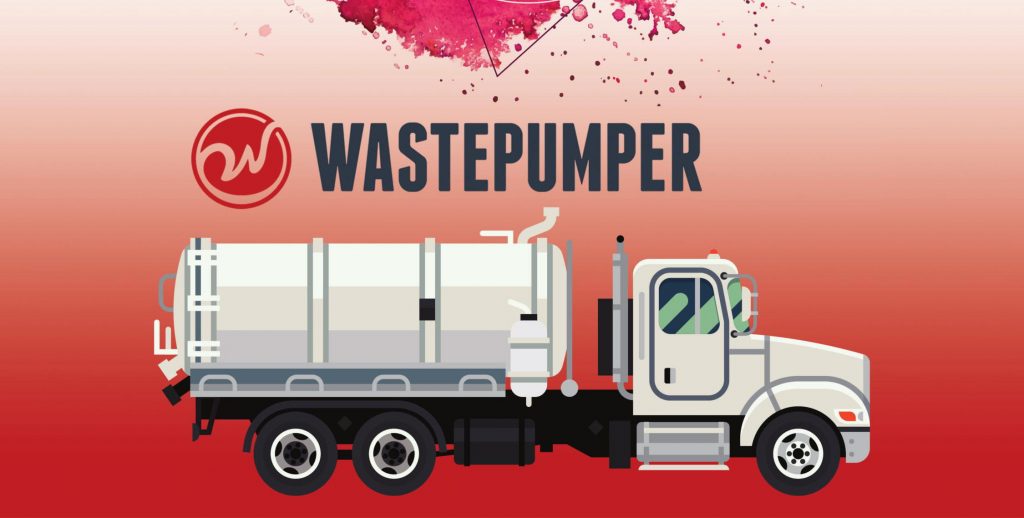- Discover how this driverless truck partnership tackles rising logistics costs and driver shortages through cutting-edge SAE Level 4 autonomy.
- Uncover the blueprint behind redundant system architecture that keeps trucks safe on the open road—even without human intervention.
- Explore the rapid mass production timeline for next-generation autonomous trucking solutions powered by a high-performance SoC.
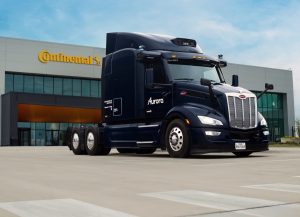
Collaborative innovation stands at the core of large-scale autonomous trucking success.
A remarkable driverless truck partnership among Aurora, Continental, and Nvidia is reshaping the future of autonomous trucking. Unveiled at CES 2025, these three firms announced a visionary collaboration to deploy self-driving trucks at scale. Their joint mission involves combining Aurora’s SAE Level 4 autonomous driving technology, Continental’s manufacturing at scale, and Nvidia’s high-performance SoC, thereby laying the groundwork for safer, more efficient commercial freight innovation across highways nationwide.
Learn more about the latest developments in Aurora Innovation shaping SAE Level 4 autonomy.
In this era defined by automated logistics, the driverless truck partnership these companies have forged is a beacon for the entire industry. By uniting proven expertise in software, hardware, and large-scale production, Aurora, Continental, and Nvidia are taking a major step toward the mainstream adoption of autonomous trucking solutions.
Collaboration Overview
Why Is This Collaboration Unique?
The commercial freight sector has long anticipated a transformative leap toward autonomous trucking solutions. This driverless truck partnership responds to deep-seated challenges such as driver shortages, increasing freight demand, and rising operational costs. Beyond the immediate benefits of reducing crashes and improving highway safety, the partnership aims to illustrate how industry collaboration can revolutionize the future of transportation.
Understand the challenges of the driver shortage and how autonomy helps address them.
Enjoying our insights?
Subscribe to our newsletter to keep up with the latest industry trends and developments.
Stay Informed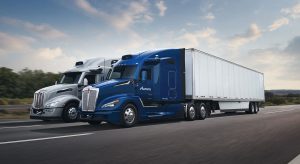
By 2027, mass-production of driverless trucks aims to reshape commercial freight.
The combined focus on SAE Level 4 autonomy means these trucks can operate under defined conditions without a human driver—particularly on highways with consistent road markings and predictable traffic patterns. As the technology advances, the operational design domain (ODD) expands, enabling trucks to handle a wider range of conditions. Throughout this process, the partners emphasize stringent compliance with safety case framework standards, underscoring the reliability of advanced self-driving vehicle safety protocols.
- Holistic Integration: Aurora’s software merges seamlessly with Nvidia’s computing hardware, while Continental ensures these systems meet automotive-grade requirements and achieve mass production timeline targets.
- Redundant System Architecture: Multiple layers of safety checks ensure that if one subsystem malfunctions, another can step in to bring the vehicle to a safe stop. This is critical for earning regulatory and public trust in driverless trucks.
- Long-Term Manufacturing Vision: Continental’s commitment to begin manufacturing at scale by 2027 ensures that the hardware required for widespread commercial freight innovation can meet surging demand once the technology matures.
Learn about other recent strategic partnerships in transport fueling next-gen autonomous solutions.
How the Joint Effort Addresses Key Logistics Challenges
Moving freight over long distances remains a complex, resource-intensive endeavor. By forming a strategic driverless truck partnership, Aurora, Continental, and Nvidia aim to tackle the most pressing needs in commercial freight innovation:
- Driver Shortages: The global logistics sector faces a persistent shortage of qualified truck drivers. Automating highway routes—often considered monotonous and grueling—reduces strain on fleets and enables drivers to pivot to more specialized tasks.
- Rising Operational Costs: Fuel expenses, accident-related losses, and driver retention costs have all climbed in recent years. AI-powered logistics platforms can optimize routes for efficiency, helping trucking companies save on both fuel and time.
- Highway Safety: By using advanced AI perception systems, redundant system architecture, and top-tier sensor arrays (lidar, radar, cameras), driverless trucks are built to detect and respond to hazards more consistently than a fatigued or distracted human driver.
Aurora, Continental, and Nvidia each contribute distinct competencies. Aurora provides the autonomous driving technology tuned to complex real-world conditions, Nvidia delivers the high-performance SoC to handle onboard computation in real time, and Continental shapes these solutions into reliable products fit for large-scale production.
Examine how logistics and supply chain evolve as these technologies reshape freight operations.

Advanced sensors and redundant systems pave the way for safer highway automation.
Company Roles in This Driverless Truck Partnership
Aurora’s Milestones in SAE Level 4 Autonomy
Aurora’s deep expertise in self-driving vehicle safety comes from years of dedicated development across multiple transportation sectors. Their proprietary software, the Aurora Driver, combines sensor fusion, machine learning, and decision-making algorithms:
- Sensor Suite: Aurora relies on lidar for long-range detection, radar for robust object tracking, and cameras for visual details like lane markings and traffic signals. This comprehensive sensor data feeds into the central AI-powered logistics platform, enabling precise maneuvering.
- Safety Case Framework: Aurora has developed a safety case framework to prove the system’s readiness for real-world operations. It involves simulation, road testing, and continuous refinement of algorithms, ensuring that every edge case—like sudden lane closures or weather changes—is managed systematically.
- Launch in Texas: April 2025 is set as the launch date for Aurora’s first wave of fully driverless trucks in Texas. With favorable regulations for autonomous vehicles, the state serves as an ideal testbed for verifying the reliability and scalability of SAE Level 4 trucking.
By consistently achieving these milestones, Aurora underscores its commitment to a data-driven validation process, ensuring that each deployment meets stringent safety and performance standards.

Aurora’s data-driven validation process underscores a methodical approach to Level 4 autonomy.
Read more about emerging truck software solutions shaping SAE Level 4 innovation.
Continental’s Role in Manufacturing at Scale
Continental has a storied history, evolving beyond tires into one of the largest global suppliers of advanced automotive systems. In this driverless truck partnership, Continental’s contribution is indispensable for ensuring the hardware reaches production-grade maturity:
- Rigorous Manufacturing Processes: With decades of experience supplying critical components to automakers worldwide, Continental is uniquely positioned to produce complex electronic control units (ECUs) that support autonomous driving technology.
- Redundant Safety Architecture: Continental is developing a dedicated fallback system capable of taking control and executing a safe stop if the primary Aurora Driver computer malfunctions. This fail-operational design aligns with both existing automotive guidelines and evolving standards for high-level autonomy.
- Mass Production Timeline: By 2027, Continental will begin ramping up its facilities to deliver hardware kits—including high-performance SoCs, sensors, and other essential components—to truck OEMs. This timeline ensures that once Aurora completes final validations, thousands of trucks can be swiftly outfitted with driverless technology.
Balancing Innovation with Practical Deployment
Continental’s manufacturing at scale reflects the broader shift toward software-defined vehicles. By 2027, the market should be primed for full-scale commercial freight innovation, allowing fleets to place substantial orders for automated semis with the confidence that they can be serviced, repaired, and upgraded effectively over time.

Continentals’ manufacturing blueprint aligns with the shift to software-defined vehicles.
Stay informed on Continental’s upcoming production expansion and how it enables mass deployment of driverless trucks.
Nvidia’s DRIVE Thor: The High-Performance SoC at the Heart
Nvidia’s new DRIVE Thor system-on-a-chip (SoC) stands at the core of this driverless truck partnership. Designed with automotive applications in mind, DRIVE Thor delivers exceptional performance for AI inference, sensor fusion, and real-time decision-making.
- Blackwell Architecture: DRIVE Thor harnesses Nvidia’s latest GPU architecture, enabling advanced computational capabilities while controlling power consumption for extended operation.
- Automotive-Grade Reliability: Nvidia’s focus on ASIL-D safety standards, secure boot functionalities, and redundancy features ensure robust, consistent performance on highways.
- Unified Software Platform: Powered by DriveOS, the SoC integrates seamlessly with Aurora’s codebase. This alignment significantly cuts the time needed for software porting and validation.
By centralizing multiple control domains—including perception, planning, and even cabin systems—onto a single, high-performance SoC, Nvidia makes it feasible to scale up production of autonomous trucking solutions without requiring fleets of specialized computers.
Discover NVIDIA’s evolving role in autonomous trucking and the cutting-edge technology behind DRIVE Thor.
Scaling AI-Powered Logistics to Transform Freight
The synergy among Aurora’s software stack, Continental’s manufacturing ecosystem, and Nvidia’s computational excellence paves the way for a radical shift in commercial freight innovation. Beyond raw performance, this driverless truck partnership delivers:

Nvidia’s DRIVE Thor consolidates multiple control domains, fueling next-gen AI trucking.
- Continuous Updates: AI models can be updated over the air, ensuring that improvements in perception or path-planning get rolled out to trucks in service.
- Flexible Integration: Truck OEMs have varying design requirements, from sensor placement to chassis layout. The modular design helps tailor the Aurora Driver to different platforms without sacrificing performance.
- Data-Driven Insights: With every mile driven, autonomous trucks generate data on traffic, weather, and route optimization. Such data can be anonymized and analyzed to refine future models, boosting safety and efficiency.
“The alignment of software and hardware, combined with mass production timeline readiness, underscores the potential for large-scale autonomous trucking solutions by 2027.”
Smoother, more predictable freight routes also promise cost savings for shippers, carriers, and eventually consumers.
Explore the expanding applications of Level 4 autonomy in modern freight operations.
Ensuring Self-Driving Vehicle Safety Standards
Safety is paramount. In a driverless truck partnership of this scale, no single technology supersedes the combined importance of redundancy, system robustness, and third-party validation:
- Redundant System Architecture: Core systems are backed up by secondary processors that can assume control if a hardware fault occurs. This helps maintain full situational awareness even during rare edge cases.
- ISO 26262 Compliance: Both hardware and software components follow automotive functional safety standards. Thorough documentation, testing, and process audits mitigate risk at every stage of development.
- Transparency and Audits: Independent entities frequently evaluate the safety case framework to confirm that each milestone is met responsibly. Aurora releases periodic safety reports detailing its progress in simulation tests, real-world miles driven, and lessons learned.
Industry Collaboration and Future Milestones
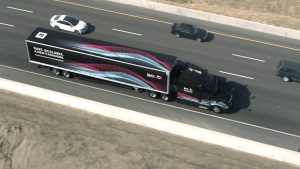
Addressing driver shortages and high costs propels the need for self-driving solutions.
Industry-wide acceptance of self-driving vehicle safety depends on constant collaboration among automakers, freight carriers, and technology companies. Over the next few years, regulators may refine guidelines on topics like permissible road conditions, fallback scenarios, and safety driver requirements:
- Regulatory Alignment: In states such as Texas and Arizona, laws already permit driverless operations. As testing expands to new corridors, policymakers will continue evaluating how to balance innovation with public safety.
- 2027 Mass Production: Continental’s timeline for large-scale manufacturing ensures that all hardware—from sensors to the central SoC—will be standardized, readily available, and cost-optimized.
- Expansion to Multiple Lanes: Aurora plans to extend service across highly trafficked lanes, eventually crossing state lines. The ability to operate safely under diverse road conditions will be a crucial step in broadening the scope of autonomous trucking solutions.
Deep Dive: Examining Key Factors Behind the Partnership
Despite the clear advantages, establishing a wide-reaching driverless truck partnership also entails navigating an intricate web of technical, logistical, and regulatory challenges. Below is a more expansive look at how each player’s strength converges in a multifaceted approach.
The Growing Demand for Autonomous Trucking Solutions

Aurora’s data-driven validation process ensures each driverless truck meets rigorous safety standards.
The ongoing expansion of e-commerce has elevated expectations for fast, reliable shipping. Carriers are under pressure to optimize delivery times while coping with driver turnover and scheduling inefficiencies. By leveraging AI-powered logistics platforms, these companies can:
- Reduce Idle Time: Trucks can operate without mandated rest periods, maximizing uptime.
- Enhance Consistency: Automated systems follow standardized procedures, delivering predictable arrival times.
- Bolster Competitiveness: Early adopters of driverless trucks may offer premium shipping services or reduced freight rates due to lower labor overheads.
These factors have heightened the industry’s readiness to adopt advanced commercial freight innovation, provided the vehicles can meet safety and regulatory requirements.
Stay updated on the transformations shaping the trucking industry and how L4 autonomy fits into the broader picture.
Why SAE Level 4 Autonomy Matters
Many conventional trucks feature ADAS (Advanced Driver Assistance Systems) like adaptive cruise control and lane-keeping, typically designated as Level 2 or Level 3 autonomy. Level 4 autonomy, however, marks a significant leap:
- Minimal Human Intervention: During certain routes or conditions, no driver is necessary behind the wheel.
- System Independence: The vehicle must self-monitor for faults and have a fallback strategy to safely handle unforeseen issues.
- Operational Design Domain: Level 4 systems operate autonomously within specific parameters, which might initially limit them to certain highways or weather conditions.
Aurora’s approach focuses on achieving reliable SAE Level 4 functionality in freight applications, since highways are more structured than urban environments. This effectively reduces complexity and enables safer early deployments.
Get insights on the broader trends in autonomous trucks shaping the future of freight.
Continental’s Background: From Tires to Tech Leader

Continental’s commitment to mass-producing advanced driverless hardware by 2027 empowers large-scale autonomy.
Renowned for its tires, Continental has quietly advanced toward complete automotive solutions, including advanced braking systems, vehicle electronics, and digital cockpit technologies:
- Global Footprint: The company operates in multiple regions, with manufacturing plants equipped to handle millions of automotive components.
- R&D Focus: Through acquisitions and partnerships, Continental has expanded its research into sensor technologies, autonomous driving modules, and software integration frameworks.
- Commitment to Functional Safety: Automotive suppliers must adhere to strict standards for reliability. Continental’s depth of experience in building components for OEMs worldwide underpins its ability to scale the Aurora Driver kit.
Their capacity to manage supply chain complexities—from sensor procurement to final assembly—provides a critical advantage in accelerating the mass production timeline.
Nvidia’s Dominance in AI Computing
Driverless truck partnership success also hinges on robust AI hardware. Nvidia has quickly become a cornerstone in the autonomous driving sphere:
- Unified Toolchain: Nvidia provides not only in-vehicle compute but also server-grade systems for off-vehicle training. This allows machine learning models to be refined and tested extensively in simulated environments before deploying updates to real trucks.
- Scalability: With the DRIVE Thor SoC, compute capabilities can be scaled up or down depending on the complexity of tasks and sensor inputs.
- Ecosystem Support: Nvidia’s development community includes thousands of engineers contributing tools, libraries, and best practices. This ecosystem accelerates troubleshooting and fosters collaboration on advanced features like real-time obstacle detection.
Discover key breakthroughs in self-driving technology as Nvidia and Aurora refine their AI capabilities.
Anticipating Commercial Freight Innovation Post-Launch

Nvidia’s DRIVE Thor SoC unifies AI computing, enabling real-time decisions for next-generation trucking.
Shortly after the initial deployments in 2025, Aurora expects to operate fleets in select markets where laws permit Level 4 autonomy. Fleet owners and logistics operators stand to gain from:
- Reduced Operating Costs: While the upfront cost of a driverless truck might be higher, the long-term savings from eliminating driver salaries, benefits, and turnover can be substantial.
- Enhanced Safety Records: Autonomous trucks react consistently, free from human errors such as fatigue or distraction. Insurance costs may drop as a result of fewer collisions.
- Extended Driving Hours: These vehicles can run late into the night, circumventing congestion in urban areas without jeopardizing driver health or well-being.
Such operational gains hinge on continuous improvements in the technology stack. As more data flows from on-road miles, the system’s AI models will steadily improve, further refining the trucks’ decision-making abilities.
Balancing Human Labor and Automation
Despite perceptions that autonomy threatens jobs, many analysts see potential for repositioning human drivers into roles less centered on grueling interstate hauls. Over time:
- Intermodal Flexibility: Drivers may focus on first-mile and last-mile routes where human navigation remains more complex and valuable.
- Specialized Oversight: Remote monitoring roles could emerge, where human supervisors oversee truck fleets and intervene in rare edge cases.
- High-Level Logistics Management: Freed from long stretches on the road, drivers can shift into dispatch, fleet management, or other positions that leverage their experience.
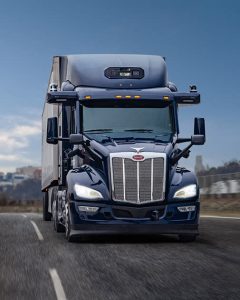
Level 4 autonomy offers continuous operations, cutting costs and boosting productivity in freight transport.
This evolving labor model could enhance overall logistics quality, as professionals concentrate on tasks requiring situational judgment or customer interaction.
Overcoming Regulatory and Perception Hurdles
Highway safety regulators demand extensive evidence before approving fully driverless operations. Each partner addresses this in distinct ways:
- Aurora: Publishes quarterly safety reports and invests heavily in real-world and simulated miles. Its data-driven approach builds a defensible track record of reliability.
- Continental: Leverages its global presence to secure certifications and meet local regulatory demands. Its automotive compliance background reassures international agencies.
- Nvidia: Continues refining the DRIVE Thor platform according to feedback from pilot deployments, adjusting features like system redundancy and power management to meet evolving regulations.
In parallel, public perception remains critical. Demonstrations that showcase safe, reliable performance will bolster acceptance. Transparent communication about how the trucks handle emergencies, inclement weather, and unusual traffic patterns is central to easing concerns.
Future of Transportation: Beyond Highway Automation

By uniting manufacturing, AI innovation, and regulatory alignment, industry leaders pave the road for driverless trucking.
While the driverless truck partnership initially targets highways, the broader impact stretches into related domains:
- Urban Deliveries: As autonomy matures, last-mile deliveries in urban areas could become viable. Smaller autonomous vans may adopt similar hardware and software principles.
- International Expansion: Regions with conducive regulations and widespread highway networks—such as parts of Europe or Asia—may adopt these solutions more rapidly once validated in the United States.
- Sustainability Goals: Autonomous vehicles can integrate better with electric drivetrains, planning routes around charging stations and using predictive algorithms to reduce energy consumption.
In the long term, a holistic mobility ecosystem might arise, combining driverless freight with ride-hailing fleets, connected infrastructure, and real-time data analytics for traffic management.
Conclusion

Autonomous trucks aim to address driver shortages, rising operational costs, and safety demands.
The ongoing driverless truck partnership among Aurora, Continental, and Nvidia represents a defining moment for the commercial freight industry. By merging Aurora’s autonomous driving technology, Continental’s manufacturing at scale, and Nvidia’s cutting-edge AI hardware, the partnership sets an ambitious yet methodical course toward safer, more efficient operations.
Through rigorous safety validations, robust sensor arrays, and a steadfast commitment to hardware redundancy, these three unstoppable firms look to address core logistics challenges head-on. The alignment of software and hardware, combined with mass production timeline readiness, underscores the potential for large-scale autonomous trucking solutions by 2027.
“As global freight needs continue to grow and the demand for commercial freight innovation intensifies, this collaboration stands as a testament to how industry-wide partnerships can reshape the future of transportation.”
By integrating advanced AI-powered logistics platforms, ensuring self-driving vehicle safety, and meeting evolving regulatory standards, this alliance offers a promising glimpse into what highways could look like in the coming decade—trucks operating autonomously, delivering goods with minimal downtime, and redefining the concept of highway automation on a grand scale.
Key Developments in the Driverless Truck Partnership
- SAE Level 4 Rollout: Aurora’s software stack paves the way for highway-ready self-driving trucks, targeting commercial routes in Texas from 2025 onward.
- Redundant Safety Systems: Continental’s manufacturing expertise ensures fallback mechanisms that maintain operational control if primary components fail.
- High-Performance SoC Integration: Nvidia’s DRIVE Thor technology delivers accelerated AI computations, supporting advanced perception and real-time decision-making.
- 2027 Mass Production: By standardizing sensor suites and compute modules, the three firms aim to launch large-scale deployments that transform commercial freight.
Dive further into innovations in Class 8 truck design crucial for fully autonomous operations.
Explore External Resources for Autonomous Trucking
- Learn more about how Aurora, Continental, and NVIDIA are collaborating on driverless trucks at this official Aurora press release.
- Find information on Continental’s plan to mass-produce Aurora’s Level 4 trucking system by 2027 at Continental’s press release.
- Explore NVIDIA’s DRIVE Thor AI computer platform and its role in Level 4 self-driving trucks at NVIDIA’s official announcement.
- Understand the technical guidelines for Level 4 driving automation (J3016) at SAE International.
- Discover FMCSA’s proposed regulatory framework for integrating autonomous commercial vehicles at FMCSA.gov.
- Learn more about NHTSA’s voluntary safety program for automated driving systems (AV STEP) at NHTSA.gov.
- Stay informed on the ATA’s advocacy for a national framework in autonomous vehicle operations at trucking.org.









